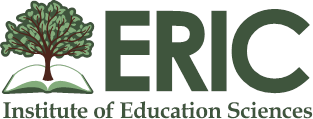Digitizing Early Childhood Environmental Education: A Bibliometric Study
DOI:
https://doi.org/10.55549/jeseh.818Keywords:
Digitizing environmental education, Early childhood curriculum, Bibliometric analysis, Research trends, VOSviewerAbstract
The integration of digital tools in education has gained attention for enhancing engagement and interactivity, particularly in fostering environmental awareness in early childhood. Early exposure to ecological concepts can nurture environmentally conscious individuals equipped to address climate challenges. This study analyzes research trends on digitizing environmental education in early childhood from 1968 to 2023. Using the Dimensions database, 443 relevant publications were identified from 9214 documents, and a bibliometric analysis was conducted via VOSviewer 1.6.20. Findings indicate that research in this field remains nascent. Although digital technology was first mentioned in 1968, significant scholarly interest only surged in 2023, with a record 1,503 publications. Vietnam, Thailand, and South Africa lead in publications, while top institutions include the University of Johannesburg, Mahidol University, and Ho Chi Minh University of Social Sciences and Humanities. The study also identifies key journals, prolific researchers, and highly cited works. Keyword co-occurrence analysis provides deeper research insights. These findings emphasize the rising role of digital tools in early childhood environmental education. Integrating technology enhances ecological understanding and fosters environmental responsibility. Additionally, this study offers a comprehensive literature overview, guiding future research on digitizing environmental education.
References
Sungwa, R. (2025). Digitizing early childhood environmental education: A bibliometric study. Journal of Education in Science, Environment and Health (JESEH), 11(4), 266-284. https://doi.org/10.55549/jeseh.818
Downloads
Published
Issue
Section
License
Copyright (c) 2025 Journal of Education in Science, Environment and Health

This work is licensed under a Creative Commons Attribution 4.0 International License.
The articles may be used for research, teaching, and private study purposes. Any substantial or systematic reproduction, redistribution, reselling, loan, sub-licensing, systematic supply, or distribution in any form to anyone is expressly forbidden. Authors alone are responsible for the contents of their articles. The journal owns the copyright of the articles. The publisher shall not be liable for any loss, actions, claims, proceedings, demand, or costs or damages whatsoever or howsoever caused arising directly or indirectly in connection with or arising out of the use of the research material. All authors are requested to disclose any actual or potential conflict of interest including any financial, personal or other relationships with other people or organizations regarding the submitted work.






